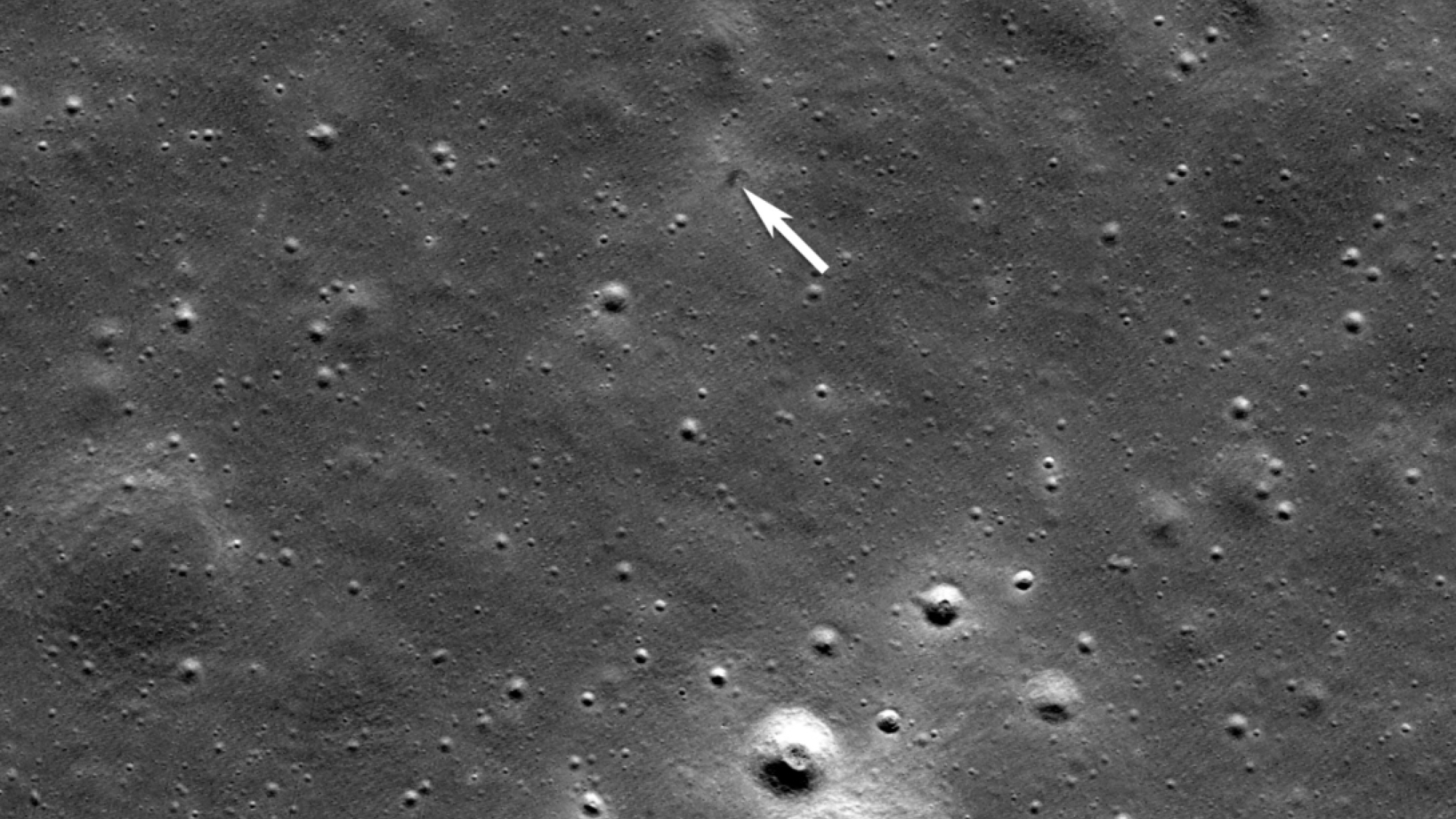
NASA moon orbiter spies grave of crashed Japanese lunar lander (image)
How did your country report this? Share your view in the comments.
Diverging Reports Breakdown
NASA moon orbiter spies grave of crashed Japanese lunar lander (image)
The ispace Resilience lunar lander crash on June 5, 2025 created a dark smudge surrounded by a subtle bright halo. The crash spot is roughly 1.5 miles (2.4 kilometers) from the landing site that ispace mapped out on its webpage. The moon lander was built and operated by the Tokyo-based company ispace. The company’s first such probe also crashed during its touchdown try, in April 2023. The ispace mission control center was unable to establish communications with the spacecraft after the landing attempt and determined that it had likely been lost.
NASA’s Lunar Reconnaissance Orbiter (LRO) has imaged the crash site of Resilience, a moon lander built and operated by the Tokyo-based company ispace.
Resilience tried to touch down on June 5 in the center of Mare Frigoris (Sea of Cold), a volcanic region interspersed with large-scale faults known as wrinkle ridges.
Mare Frigoris formed over 3.5 billion years ago as massive basalt eruptions flooded low-lying terrain, according to Mark Robinson, a lunar scientist for the company Intuitive Machines who is based in Phoenix, Arizona. Later, the wrinkle ridges formed as the crust buckled under the weight of the heavy basalt deposits.
Lost on landing
Shortly after Resilience’s landing sequence, the ispace Mission Control Center was unable to establish communications with the spacecraft. The team determined that Resilience had likely been lost , a conclusion that was firmed up a few hours later.
Also lost on landing was the Tenacious microrover, a small wheeled vehicle developed in Luxembourg by ispace’s European subsidiary. Tenacious carried a piece of artwork on its front bumper — Mikael Genberg’s “Moonhouse,” a small replica of the red-and-white homes famous in Sweden.
Ryo Ujiie, Chief Technical Officer of ispace, holds a model of the Resilience moon lander while discussing its final approach to the moon during a failed lunar landing on June 5, 2025. (Image credit: ispace)
Dark smudge
Resilience left some telltale marks when it slammed into the moon on June 5, and LRO noticed them.
“The dark smudge formed as the vehicle excavated and redistributed shallow regolith (soil); the faint bright halo resulted from low-angle regolith particles scouring the delicate surface,” Robinson, the principal investigator for the Lunar Reconnaissance Orbiter Camera, told Inside Outer Space.
Get the Space.com Newsletter Breaking space news, the latest updates on rocket launches, skywatching events and more! Contact me with news and offers from other Future brands Receive email from us on behalf of our trusted partners or sponsors
The crash spot is roughly 1.5 miles (2.4 kilometers) from the landing site that ispace mapped out, to one decimal place, on its webpage. One decimal place in lunar latitude and longitude equals 19 miles (30 km), Robinson said.
Resilience was ispace’s second moon lander. The company’s first such probe also crashed during its touchdown try, in April 2023.
